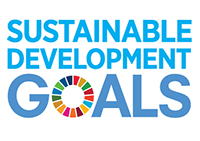Air Quality
Definition:
PM2.5 or fine particulate matter refers to solid particles and liquid droplets suspended in air that are smaller than or equal to 2.5 micrometre (µm) in diameter.
Measurement and Limitations:
Fine Particulate Matter (PM2.5) Canadian Ambient Air Quality Standard. PM2.5 levels are calculated using two statistical forms called the 24-hour and the annual metrics, which estimate the short-term and long-term exposures of the pollutant, respectively. The Canadian Ambient Air Quality Standards for PM2.5 are achieved when annual metrics are 8.8 micrograms per cubic metre (µg/m3) or lower, and the 24-hour metrics are 27 µg/m3 or lower.
PM2.5 particles when inhaled, travel deep into the lungs and the bloodstream, and can cause adverse health effects like cardiovascular and respiratory diseases. PM2.5 is considered a non-threshold pollutant, that is, there are no safe limits for exposure.
Source:
Latest air zone reports – Province of British Columbia (gov.bc.ca)
Georgia Strait Air Zone Report (2018 to 2020) (gov.bc.ca)
Resources:
Comox Valley – Air Quality Health Index – Province of British Columbia (gov.bc.ca)
Environmental Reporting BC – Province of British Columbia (gov.bc.ca)
Airshed Roundtable Project | Comox Valley Regional District (comoxvalleyrd.ca)
Courtenay Elementary School – Air monitoring station – Province of British Columbia (gov.bc.ca)
 Air Quality in the Sustainable Development Goals
Air Quality in the Sustainable Development Goals
Click on the SDG to reveal more information
13. Take urgent action to combat climate change and its impacts
Climate change is now affecting every country on every continent. It is disrupting national economies and affecting lives, costing people, communities and countries dearly today and even more tomorrow.
People are experiencing the significant impacts of climate change, which include changing weather patterns, rising sea level, and more extreme weather events. The greenhouse gas emissions from human activities are driving climate change and continue to rise. They are now at their highest levels in history. Without action, the world’s average surface temperature is projected to rise over the 21st century and is likely to surpass 3 degrees Celsius this century—with some areas of the world expected to warm even more. The poorest and most vulnerable people are being affected the most.
Affordable, scalable solutions are now available to enable countries to leapfrog to cleaner, more resilient economies. The pace of change is quickening as more people are turning to renewable energy and a range of other measures that will reduce emissions and increase adaptation efforts.
But climate change is a global challenge that does not respect national borders. Emissions anywhere affect people everywhere. It is an issue that requires solutions that need to be coordinated at the international level and it requires international cooperation to help developing countries move toward a low-carbon economy.
To address climate change, countries adopted the Paris Agreement at the COP21 in Paris on 12 December 2015. The Agreement entered into force shortly thereafter, on 4 November 2016. In the agreement, all countries agreed to work to limit global temperature rise to well below 2 degrees Celsius, and given the grave risks, to strive for 1.5 degrees Celsius. You can learn more about the agreement here.
Implementation of the Paris Agreement is essential for the achievement of the Sustainable Development Goals, and provides a roadmap for climate actions that will reduce emissions and build climate resilience.
See which countries have signed it and which ones have deposited their ratification instruments.